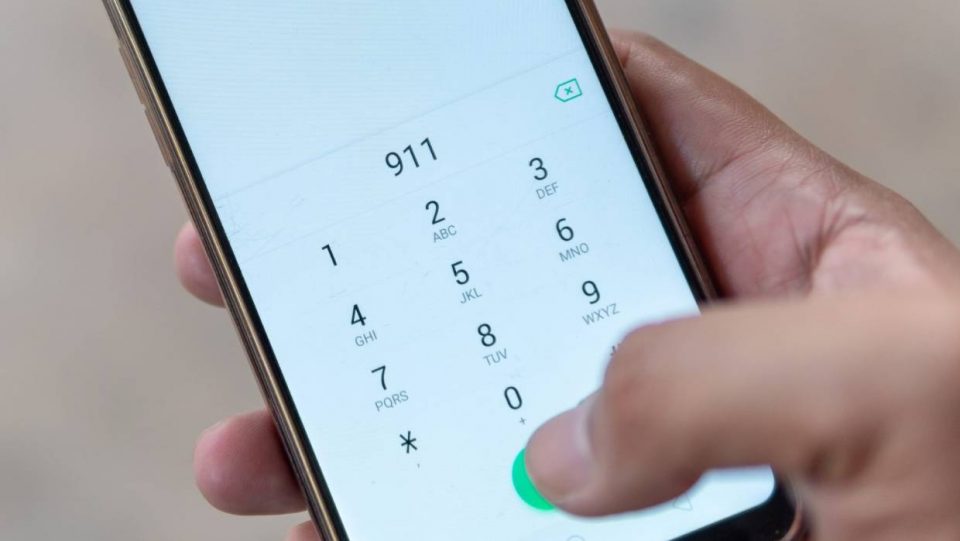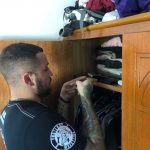Yeming Shen called US emergency number 911 on February 10. He was alone in his Troy, New York, apartment, dying of the flu. But the garbled call was unintelligible to the operators, and police couldn’t pinpoint the phone’s location.
For 45 minutes after Shen called 911, five police officers, three firefighters and a police dog searched in vain for the student. All they had was a general area encompassing two apartment buildings. They eventually gave up without finding Shen.
Six hours later, the Rensselaer Polytechnic Institute student’s roommate discovered his body, the Times Union first reported.
The case highlights problems that have plagued 911 phone systems across the country since the advent of smartphones. Cellphone privacy settings and outdated dispatch mapping systems continue to frustrate first responders when they can’t find callers.
Landline numbers are much easier for these systems to pinpoint. But over 80 per cent of the calls to the nation’s 911 centres are from cellphones, The Washington Post has previously reported.
The Federal Communications Commission has required cellphone carriers to improve the transfer of information to 911 centres. The carriers have until 2021 to make sure transmitted locations are within 50 yards 80 per cent of the time.
Cities have partnered with technology companies to better their systems. In the meantime, law enforcement personnel and the wireless industry have struggled to find a solution.
Ohio teenager Kyle Plush came up with an answer to the problem in 2018. His idea, designed for a hack-a-thon competition, was to modify the Apple Watch to include a distress signal function that would send an exact location to first responders. Two months later, Kyle became trapped under a seat in his Honda minivan. When he called 911, the operator couldn’t understand the breathless teenager, The Post then reported.
He was later found dead in his car.
Kyle’s family has since started the Kyle Plush Answer the Call Foundation to bring awareness to the aging 911 infrastructure, citing similar stories.
Another incident ended with the death in 2017 of Charles Romine, near Dayton, Ohio. It took two days for the Montgomery County Sheriff’s Office to find the body of the 71-year-old man after he called 911 for help. Chief Deputy Rob Streck told the Dayton Daily News that operators rely on the location provided by callers because location technology is “kind of a coin toss”.
But people calling 911 in emergencies may not be able to give an address.
Last year in Chicago, a stroke victim, whose brain function was quickly deteriorating, didn’t know the address of the hotel he was staying in, local news reported. The Chicago 911 system couldn’t trace his cellphone because it was not set up to connect to the Internet for security reasons.
Even when callers know their locations, operators answering may not.
In 2015, Shanell Anderson, a 31-year-old newspaper delivery woman in Georgia, drove her car into a pond and was sinking when she called 911. She spent her last moments of consciousness telling a 911 operator the intersection of the pond. But the dispatch centre that received the call was in the wrong county, an Atlanta TV news station reported.
Anderson kept repeating her location until rising waters muffled her, but the operator was helpless.
“Give me the address one more time. It’s not working,” the dispatcher said.
Calls being routed to another agency is so common that most systems allow operators to transfer calls to neighbouring centres.
The response to a deadly school shooting in Parkland, Florida, in 2018 was delayed because calls to 911 were routed to two different dispatch centres depending on whether callers were using cellphones or landlines, a commission set up after the shooting found. Overwhelmed by the volume of calls, dispatch dropped some and didn’t transfer others.
In Shen’s case, tracking the student was further complicated because he was using a Chinese cellphone and US number. The number wasn’t registered to a name or address, so police couldn’t identify his apartment number.
Shen was pursuing a doctorate at the New York university when he died, the school said in a statement. He previously earned his master’s and bachelor’s degrees in Guangzhou, China.
His research at RPI may be used to disrupt human trafficking, one of Shen’s professors, Thomas Sharkey, wrote in a letter to the editor published in the school’s paper.
“He used his tremendous mathematical mind to help create new methods to disrupt the networks of transnational criminal organisations, a truly noble cause,” Sharkey said about his student. “His work garnered significant attention from government agencies to the point where it could be providing insights into shaping policy in the near future.”





